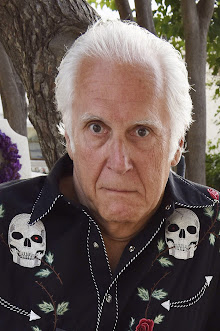Some readers have written to say they appreciate posts on Brazilian history. But this one, in terms of scope, is more
ambitious than any that preceded it. So, after having written it once, I
re-wrote it, simplified it, and included a number of links for those of you who would like to know more.
Here goes:
In my youth, if you’d have asked any little girl in the
United States who discovered the New World, she would have told you it was a
Spanish crew, under a Genoese navigator, Christopher Columbus, and many could have
added a date: October 12th, 1492.
These days, of course, we know that the European's discovery of
North America should actually be credited to the Norwegians, who established
short-lived colonies there in the earliest years of the eleventh century.
Similarly, most Brazilian schoolchildren will tell you their
country was discovered by Pedro Alvarez Cabral. It may be true (more on that subject at the end of this post) but,
even if it is, it wouldn’t have happened had it not been for three of Cabral’s
predecessors – and a fortuitous accident.
Here’s the story:
It all started with this guy, the third son of John the
First of Portugal and his English wife, Philippa of Lancaster. They baptized
him Henry, and we know him today as Henry “the Navigator”.
In fact, he never navigated anything.
But he did have an intense interest in the art and science that it entailed,
and he patronized many voyages. In Henry’s day, exploration of the coast of
Africa hadn’t gone much further than Cape Bojador, located a little over a hundred nautical miles south of the
Canary Islands.
But Henry, obsessed with finding the legendary
Christian kingdom of Prester John and also getting his country’s hooks into the
West African gold trade, commissioned the construction of caravels.
These were newer and lighter ships better-suited to long-range
exploration than the heavy Mediterranean vessels that preceded them. And he encouraged
his captains to strike ever further southward.
Henry died without ever having learned that there was a
way around the tip of Southern Africa. But his work, supported by the kings who
followed, continued. And, in 1488, twenty-eight years after Henry’s death, the
Portuguese achieved a striking success.
Bartolomeo Dias rounded what he called the Cape of
Storms and was able to turn the bow of his ship northward.
Dias wanted to continue on to India, but his crew
refused to go further and he was forced to turn back. Upon his return to
Lisbon, John II, renamed the place the Cape of Good Hope, because of the
promise it offered of a sea route to the East. But, European concerns caused
the Portuguese to suspend their explorations for the next ten years. And it
wasn’t until July of 1497 that the next fleet set sail.
This time, under the command of this fellow:
Vasco da Gama.
After many privations and adventures Gama returned, two
years later, to report that he’d managed to make it all the way to India. And
he was heaped with rewards and honors by King Manuel I.
Enter Pedro Alvarez Cabral, the next man up.
Cabral set sail with a fleet of thirteen ships at noon,
on the ninth of March, 1500. The object of his undertaking was to return with
valuable spices and to establish trade relations in India—bypassing the
monopoly on the spice trade then in the hands of Arab, Turkish and Italian
merchants.
It was the custom, in those days, to appoint a member
of the nobility to command the fleets, but they were often men without maritime
experience (as in this case) so decisions of a nautical nature were left to more-experienced
captains and pilots, most of them commoners.
By that time, the Portuguese navigators had already
become aware of the trade winds that prevail in the Atlantic, and they sailed west,
to take advantage of them, before turning south and then eastward again toward the Indian subcontinent.
They did not, however, have an accurate system for
measuring longitude.
That was a development that came about only
two-and-a-half centuries later, with the development of the marine chronometer.
So they wound-up sailing too far. And, on the
twenty-second of April, less than seven weeks after having first set sail, they
bumped into Brazil and claimed it for Portugal.
And that remains the official history as far as most
Brazilians are concerned.
But is it true?
Well, maybe.
But some historians claim that Duarte Pacheco Pereira
got there first, maybe as early as November of 1498.
And others think it was Vicente Yáñez
Pinzón, who might have arrived just three months before Cabral did.
Ah, for the good old days. When it was all so simple.
Leighton -
Monday



























